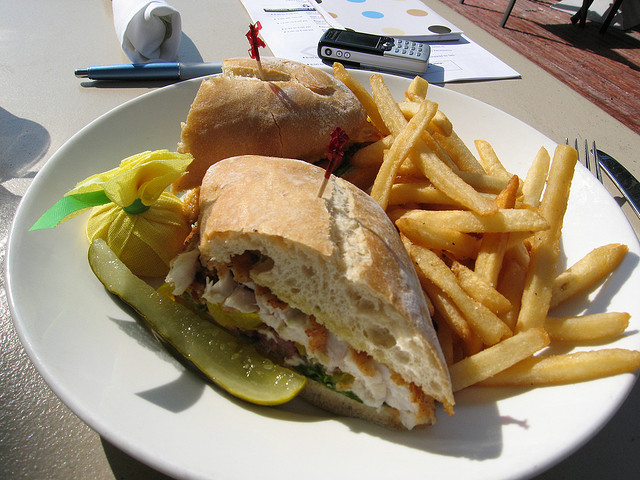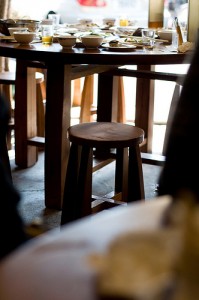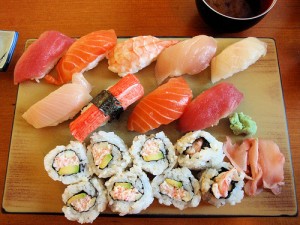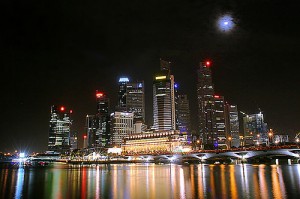I love food so when Sherry, who lives in Jamaica, asked if I was interested in a post about the cuisine of the Caribbean I had to say YES! I hope you enjoy!
Food is an important part of the culture of the Caribbean, and the generous portions and wonderful flavors make the most of the native fruits and vegetables that grow in abundance around the islands. With the abundant marine life that is to be found around the islands of the Caribbean, it is unsurprising that seafood also plays an important role in the diet of the region, while meat is also on the menu.
Although many of the influences of the cuisine in the Caribbean is based on the ingredients and spices available in the region, there are also many dishes that are largely influenced by the colonial powers who have played an important, if not always pleasant, role in the habitation of the region.
Seafood
Almost every type of seafood can be found in the Caribbean islands, with the large fish such as marlin and grouper very popular and almost abundant in the seas of the region. Shellfish are also very popular, with shrimps, crayfish and prawns being very popular. One of the most interesting fish is the ‘Flying Fish’, which is particularly popular fried on the island of Barbados. While frying is a popular cooking method on the former British colonies, one influence to be seen in the former French colonies is that the fish are often served in a rich sauce, or having been lightly grilled and seasoned.
The Vegetables And Staples Of Caribbean Cuisine
Vegetables, fruits and legumes play an important role in the cuisine of the Caribbean, both in terms of adding flavor and texture to the dishes as well as being the main feature of many dishes too. One of the features of Caribbean cuisine is combining fruit and spices with savory dishes to make an interesting dish, with limes and pineapples being particularly popular in this type of dish. In terms of the most common ingredients to be found in Caribbean dishes, sweet potatoes, tomatoes, rice, beans and chick peas are all among the staple food that help to add bulk and taste to the Caribbean diet.
Meat In Caribbean Cuisine
Some of the most popular dishes in Caribbean cuisine include meat as a main ingredient, and whether it is barbecued or grilled and served with a sauce of a marinade, or included in a stew, meat plays an important role. As well as the usual meats such as lamb, pork, beef and chicken, goat is also a popular meat in the Caribbean, which is usually roasted with jerk spices or included in a curry or a stew. If there is one dish that is considered to be typical of Caribbean cuisine, then Jerk Chicken is probably the most popular of all. It can be a bit spicy so it’s good to ask first, if you have acid reflux you definitely want to take some precautions as it can be hot!
Street food is an important part of the cuisine in the Caribbean, and meat is to be found of many of these dishes, including in the delicious Empanadas that are to be found in the Dominican Republic and in Jamaica. Jerk chicken is sold from vendors on the street in Jamaica, while the deep fried pork rinds of the Chicharron are superb, although definitely one to eat in moderation!
Desserts
Many of the restaurants in the Caribbean will stick to European style desserts on their menus, but the wonderful fruits of the islands are a great ingredient that are to be found in many desserts. Barbecued and caramelized bananas are a real treat, while many of the desserts offer a lovely
combination of pineapple and a rum syrup too. In a region which has a warm climate such as the Caribbean, it is also common to see ice cream which is available in a wide range of desserts too.


 A key part of learning about any new culture is getting to know their food. In fact a meal for many people is their first introduction to a country and a people. I will never forget my first bite of Thai food- life changing, not an exaggeration, although at the time I took it I could not have told you anything about
A key part of learning about any new culture is getting to know their food. In fact a meal for many people is their first introduction to a country and a people. I will never forget my first bite of Thai food- life changing, not an exaggeration, although at the time I took it I could not have told you anything about  Editor’s Note: My friend Lilly is writing this because I am too busy and she loves the idea of blogging!
Editor’s Note: My friend Lilly is writing this because I am too busy and she loves the idea of blogging! 